The Fungia Plate coral is an excellent choice for just about any reef tank. They are easy to care for, and there are lots of varieties to choose from. Let’s see why these corals are so great and if they are right for your saltwater aquarium.
Interesting behavior: Plate corals move around
Believe it or not, one of the most fascinating aspects of keeping the Plate Coral is that they will actually move around your tank to their most preferred location (albeit at a speed that a snail would think is slow), much like anemones, and even climb up the rocks at a 30-degree slope! Get out your protractors. This can be fascinating and sometimes frustrating when your prized coral keeps wandering out of the “perfect” place (by your standards) to find its own perfect place.
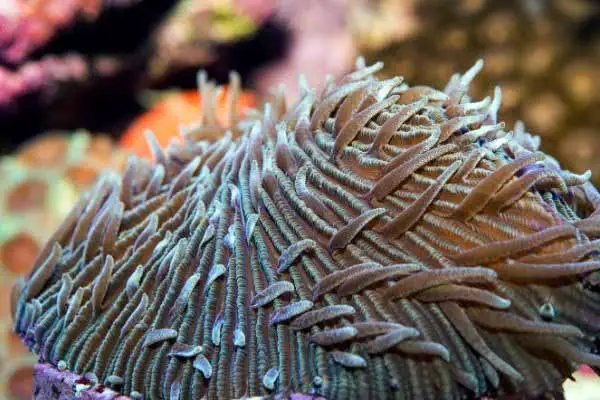
They can move as much as 12 inches, in a day, and up a 30-degree slope…I’m not even sure I could climb 12 inches up a 30-degree slope.
They are also generally capable of ‘righting’ themselves, if they get flipped over and of removing sand and sediment that gets blown onto them. Cool. Just beware, even though they CAN remove sediment that gets blown on them, it does come at a metabolic (and induced stress) price. It takes hard-earned survival energy for them to clean themselves–so if it is happening routinely, it is best to resolve the issue rather than continue to be amazed.
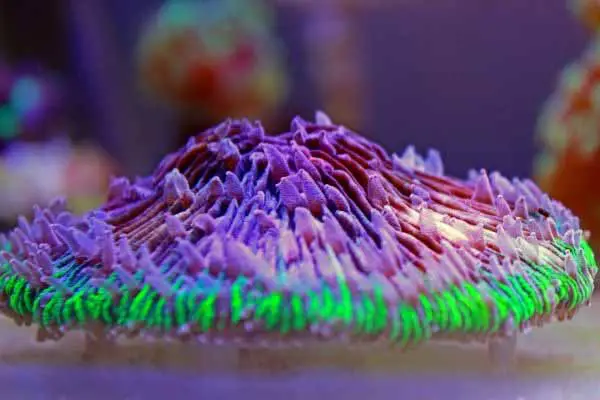
Scientific name and common names
The Plate Coral is part of the Fungiidae family, sometimes also called mushroom corals likely due to their shape, but also potentially confusing, since the term could also apply to Discoma and Rhodactis coral species, more commonly. There are many different species of coral in this family, with different combinations of size, shape, and polyp color and shape.
Size
The size of different Fungia Plate corals can vary greatly, depending on the species. The popular Pinwheel Plate Coral, for example, may only grow to be about four inches in size, while other species may grow to be about 1 foot wide. Luckily, since most of our tanks would not accommodate a foot-long moving coral, the majority of specimens I have seen in the trade are in the ‘couple of inches’ range.
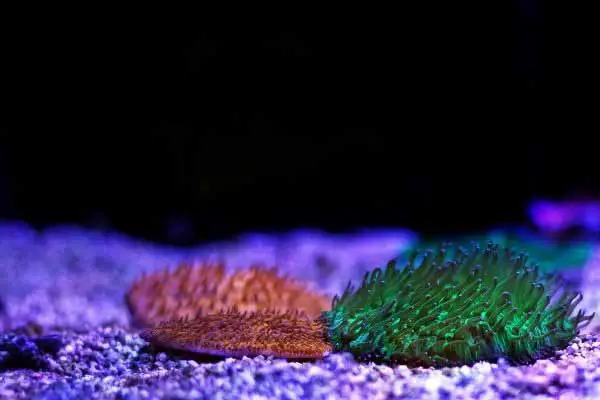
Level of care
Fungia corals are generally considered to be easy to care for. They generally do best on the bottom of the tank with moderate lighting and feeding.
Compatibility with and aggression level in Fungia Plate corals
Plate corals are considered to be semi-aggressive. Their preferred mode of aggression is to cover their neighbors with thick mucus that has chemicals in it that are generally toxic to the cells of the neighboring coral. Nice neighbors, eh? With that said, many/most corals display some aggression towards their neighbors. It’s a Dogfish eat dogfish reef out there…or, um…it’s a sting your neighbor world out there…I mean, it’s a grow over your neighbor to shade them out world out there…It’s a cover your neighbor in thick mucus, if you have to, in order to survive, world out there.
With that said, the Fungia Plate coral is largely compatible with other reef-safe animals. The best advice is to give your new friend plenty of room–they inflate themselves with water and can become significantly larger than they look, by judging the skeleton. If you can, you also want to try to place them somewhere with room to roam, where they won’t easily bump into (and slime) a neighboring coral.
If you do notice them wandering, keep an eye out for contact and aggression and try moving them (or the other coral) to a safer spot.
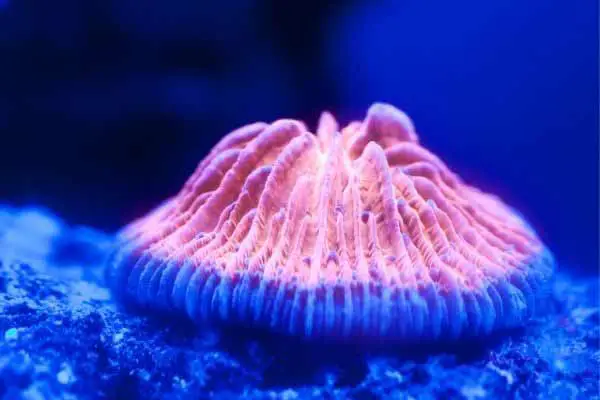
Watch out for fish species, like Longnose butterflyfish that like to nip polyps.
If you’re going to keep one Plate coral, consider keeping 2-3 because they are extremely compatible with other Fungia (meaning, they will happily co-exist and won’t slime each other). If you live with someone who watches your aquarium budget closely, feel free to show them this article, as “proof” that you should, in fact, consider purchasing multiple specimens.
Feeding
Fungia Plate corals are photosynthetic, meaning they have zooxanthellae that help them get some nutrition from the lights above your tank.
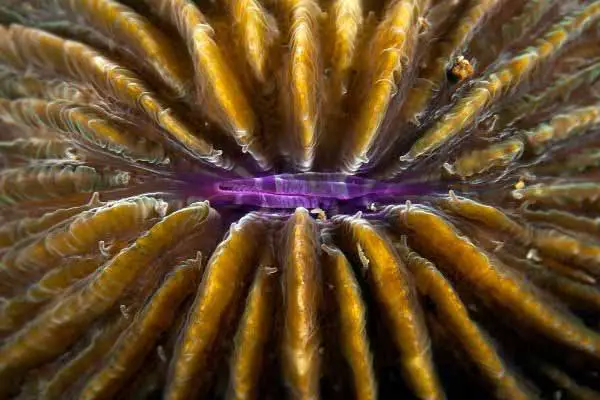
But remember that all corals are animals, which means, they are meant to eat food. Fungia are no exception. They will thrive in your tank if fed brine shrimp, mysis shrimp, or any similarly sized meaty or coral food when their polyps are fully extended.
Check out this time-lapse video of a plate coral eating:
Aquarium water parameters
- Temperature: 73-84 degrees F
- pH: 8.1- 8.4
- Alkalinity: 8-12 dKh
- Salinity: 1.025 specific gravity
- Calcium: 400 ppm
- Trace elements:
- Water flow: Low/Moderate
- Lighting: Low/Moderate
- Location: bottom of the tank, sandy or rubble substrate
For more information about the ideal reef tank water parameters, check out this article.
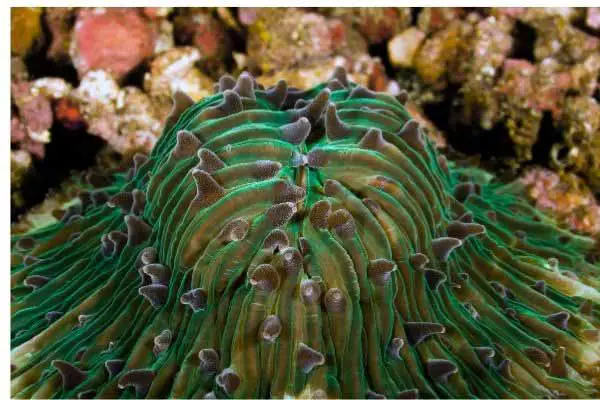
Placement in the tank
Your Plate coral will generally do best when placed at the bottom of your tank, on the sandy or rubble substrate. Just beware that even if YOU pick the perfect place for this LPS, chances are good that your Fungia will move around and find the home it thinks is perfect.
How to frag
Fragging the plate coral is somehow simultaneously simple…and harrowing. The majority of the body of a Fungia plate coral is a calcium carbonate disc–almost like bone. According to Borneman, you can frag this coral, as long as you get 1/16 of the mouth as part of the frag. So if you do attempt this at home, be sure to cut the coral into fragments “pizza-style” and be sure to cut the slices through the middle, with a Dremel tool or a tile saw (Borneman 2001)
This can be a harrowing experience, for the uninitiated…well…because you’re slicing up one large, single polyp. But it works.
For more information about fragging the plate coral and other coral species, check out the book:
Conclusion
Plate Corals are gorgeous, easy to care for, and can live for many years in your tank. The best bets are to ensure routine feedings and to give this coral its space. Do you have experience keeping this great coral? If so, please leave a comment below and share your thoughts and experiences, to help others who might be interested.
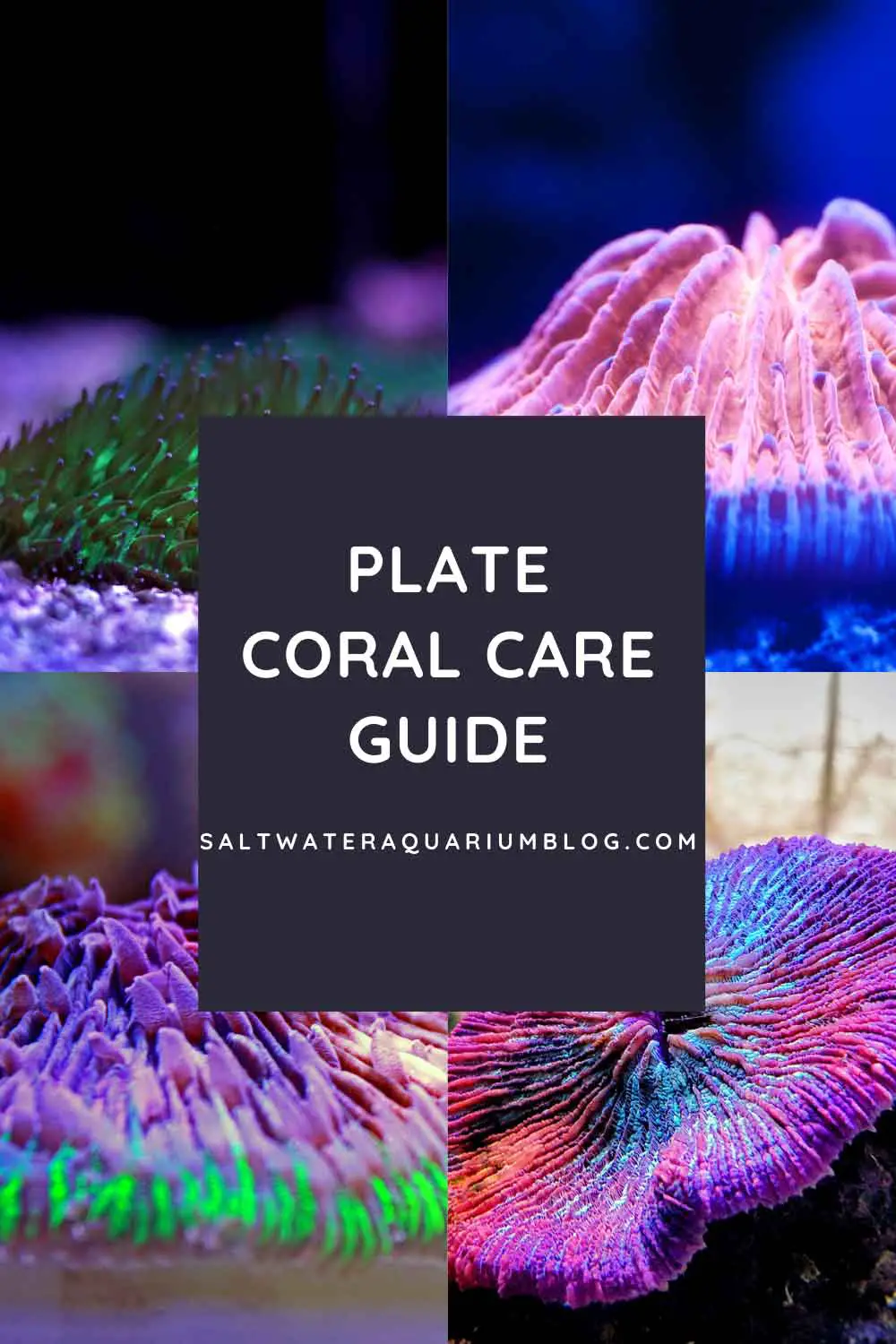
References
Borneman, Eric H. Aquarium Corals. Microcosm Ltd; 1st Printing Edition (March 1, 2001)
Ulrich III, Albert B. How to Frag Corals: Step-by-step guide to coral propagation and filling your frag tank with thriving polyps.www.SaltwaterAquariumBlog.com (January 20, 2015).
Ulrich III, Albert B. The New Saltwater Aquarium Guide.www.SaltwaterAquariumBlog.com (April 8, 2014)

Leave a Reply